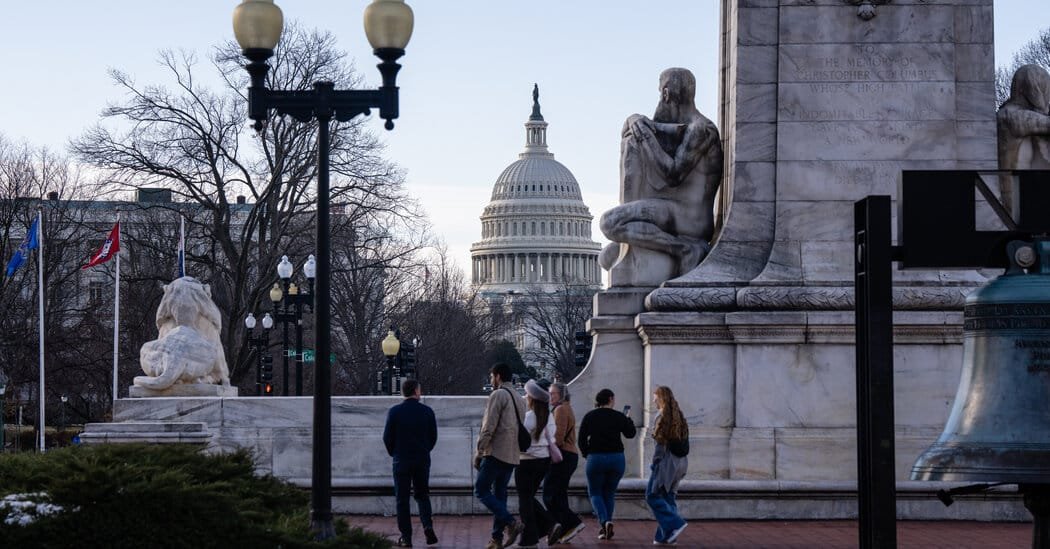
President Trump’s blanket pause on foreign aid, grants, loans and other pots of federal financial assistance that might clash with his administration’s agenda poses a direct challenge to Congress, which approved the funds and directed where they ought to be spent.
While presidents traditionally submit requests to Congress to spend taxpayer money in a way that aligns with their governing objectives, the Constitution vests the power of the purse exclusively in the legislative branch — meaning that when it comes to federal spending, it’s the lawmakers who get to call the shots, and the executive branch that is supposed to implement their orders.
In practice, however, presidents and Congresses have often butted heads over this seemingly straightforward arrangement, particularly when the administration elects to withhold money that lawmakers have directed be spent — a move known as impoundment. And while there are statutory guidelines to how far presidents can push back against Congress when it comes to spending, Mr. Trump’s across-the-board move may test whether they are strong enough to restrain a president determined to have his way.
Here’s more about the roles each branch plays in funding the government, and directing how federal dollars are spent.
Congress decides what deserves funding, and how much.
The Constitution gives Congress the authority to appropriate funds — a function often referred to as the “power of the purse,” which derives from the Article I instruction that “no money shall be drawn from the Treasury, but in Consequence of Appropriations made by law.” Spending bills originate in the House of Representatives, and like other legislation, have to be approved by both the House and the Senate before they can be signed by the president and take effect.
Congress traditionally aims to pass spending bills on an annual basis, with emergency appropriations to supplement any surprises that demand the government’s financial attention in between times. But that hasn’t been the way it’s worked lately: Right now, federal government spending is operating under what is known as a continuing resolution, which extends funding levels until a deadline set by lawmakers. It expires March 14.
Thank you for your patience while we verify access. If you are in Reader mode please exit and log into your Times account, or subscribe for all of The Times.
Thank you for your patience while we verify access.
Already a subscriber? Log in.
Want all of The Times? Subscribe.







